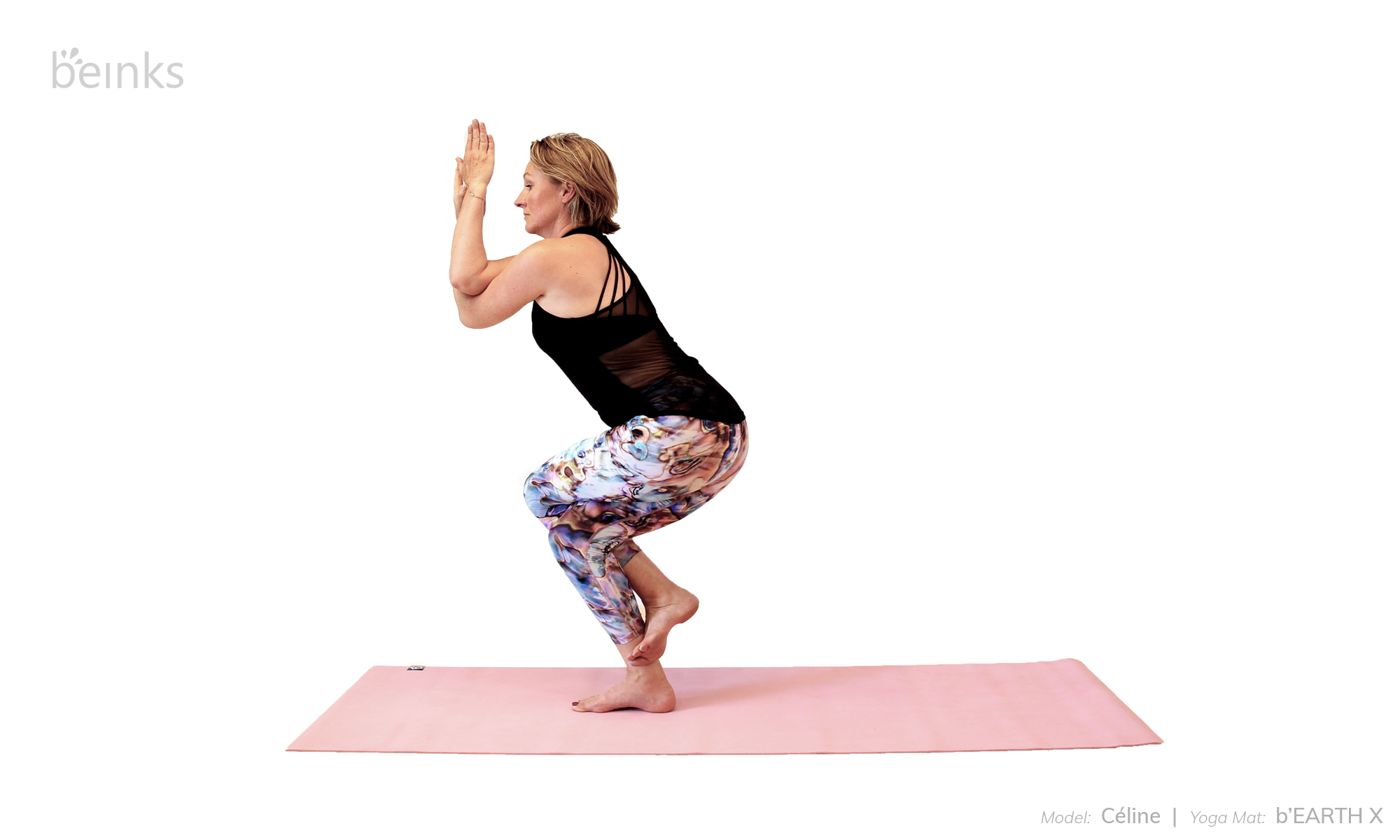Summary of Contents
About the pose
The name comes from the Sanskrit words ‘garuda’ = ‘eagle’ and ‘asana’ = ‘ ‘posture’. Garuda is known as the king of the birds. This standing pose is also referred under the category of balancing poses and works to strengthen the legs.
Anatomy
Eagle Pose benefits the following muscles and hence can be included in yoga sequences with the corresponding muscle(s) focus:
- Arms and Shoulders
- Lower Back
- Hips
- Knees
- Pelvic
- Quadriceps
How to do the pose
- Stand in Tadasana (Mountain Pose), relaxing and taking a few breaths here.
- Inhale and raise the right foot from the floor and place the right leg over the left thigh above the left knee. Rest the back of the right thigh on the front of the left thigh. Exhale completely here and watch the balance.
- Now, move the right foot behind the left calf so that the right shin touches the left calf and the right big toe hooks just above the inner side of the left ankle. The right leg is now locked around the left leg.
- When comfortable, lower the hips and remain in balance for sometime.
- Bend the elbows and raise the arms to the level of the chest. Rest the left elbow on the front of the right upper arm near the elbow joint. Then move the left hand back to the right and the right hand back to the left and join the palms. The left arm is locked around the right arm.
- Stay focused gazing at one point and make sure the back is straight. Remain in this pose for about few seconds, or for about 6 breaths focusing from the core, as you pull your navel in.
- Be aware of the balance, the stretch, the weight of the body on the foot, the breath, and gaze, which all put together helps you stay in balance.
- To release, relax the arms and the legs and come back to Tadasana (Mountain Pose) and relax.
- Repeat the pose standing on the right leg and interlocking the left foot behind the right calf and the right arm around the left arm. Stay here with the balance for about 6 breaths and make sure the spine is straight, as you drop the hips lower.
- For better balance it is important to bring the focus from the core and the more the legs are interlocked tight the better the balance.
Beginners tips
- In this pose as the balancing of the body can be difficult, one could use the wall for support.
- Relaxing the crossed leg foot on the floor for starters is a good way to get to the pose gradually.
- The interlocking of the arms and the elbows if difficult, then one can just go into a simple Namaste close to the chest or interlock as per the comfort.
Benefits
- Muscles : The hamstring muscles, the quadriceps, calves and the shoulders are stretched. This stretch brings flexibility and strengthens the calves and the ankles.
- Balance : This pose improves the balance of the body and enhances concentration. It works from the core and hence the core strength is kept in mind here.
- Stretches : This yoga pose stretches the hips, thighs, shoulders and the upper back.
- Joints : This pose opens all the joints in the body; the shoulders, the elbows, the wrists, the hips, the knees, and the ankles.
- Toxins : Since this asana is a twist, the pose detoxifies your body. It flushes out your kidneys, circulates blood to your reproductive system.
- Runners : This yoga pose is considered wonderful and useful for runners. The joints filled with fresh blood acts like a great support for running and the stretching of the legs brings more strength and stamina in the legs.
Watch out for
- Avoid getting into this pose if you have any knee, elbow, ankle and wrist injury. Not for women in later term pregnancy.
FURTHER READINGS
- The complete yoga teachers’ guide – How to learn, earn & grow
- Free yoga resources – eBooks, music, asanas
- Yoga mat quiz – Which yoga mat is the best for me?
- Understanding about yoga
Variations
- This yoga pose can be used along with various other yoga poses like : Gomukhasana, Sirsasana, Reclining Eagle Pose, Handstand (with legs interlocked in Garudasana).
Credits
| Model | Céline Pannier – An Ambassador of Beinks |
| Yoga Mat | b’EARTH & b’EARTH X by Beinks |
| Photographer | Sophie Dupont |
| Content | Tummee & Ekhart Yoga |



